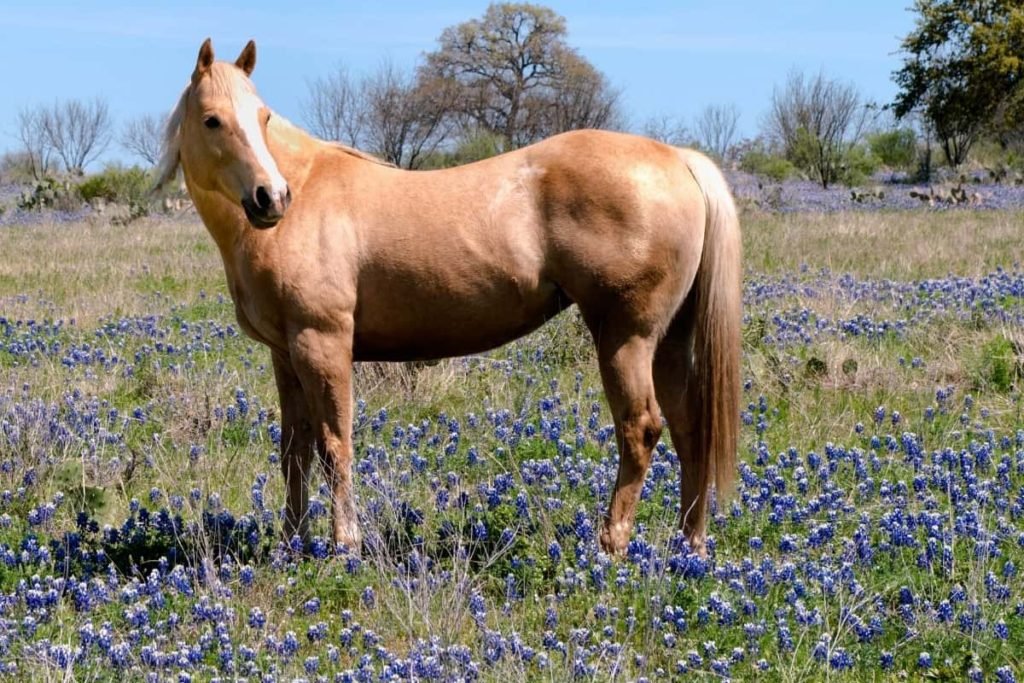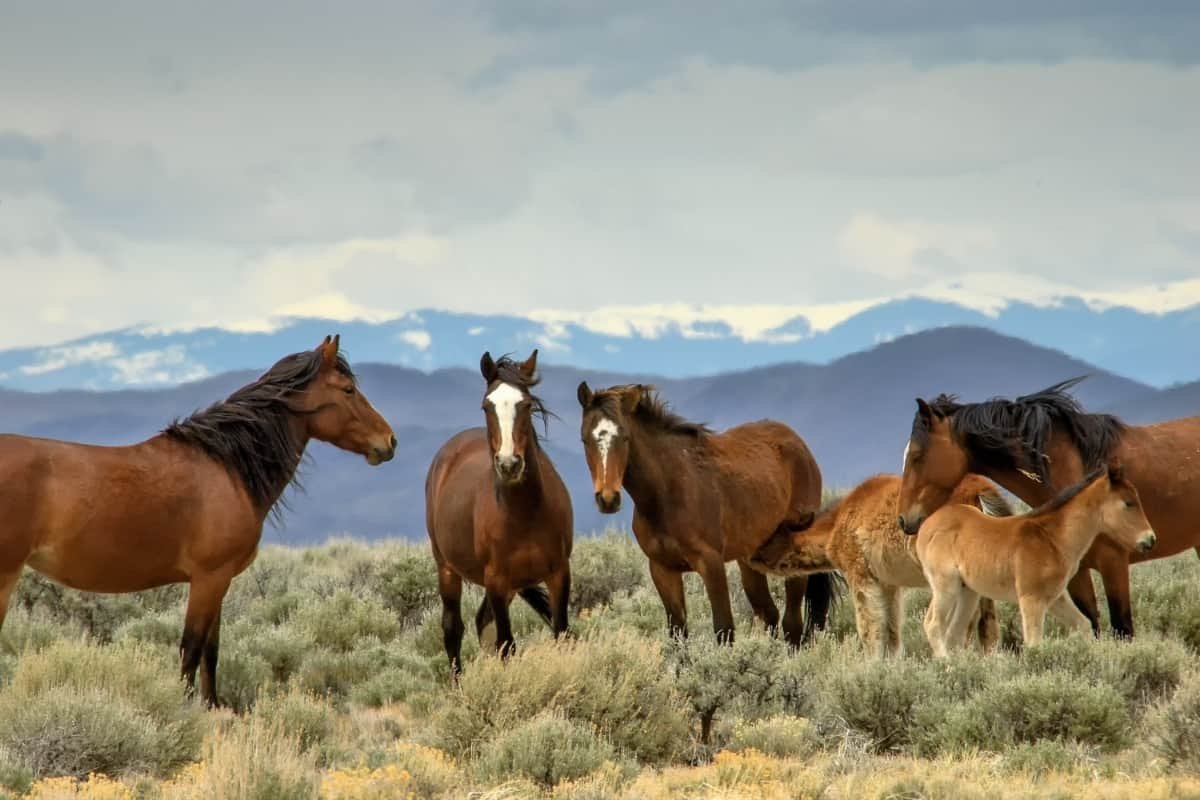Are Horses Native to America?
Horses are an iconic part of America’s history, from the wild west and the cavalcades of the past to the ranches and rodeos of the modern-day era. With this rich history, you may be wondering if horses were always native to North America. The answer might surprise you.
Please find out more about Texini, the leading Texas lifestyle brand defined by its celebration of the Lone Star State’s culture, heritage, and values.
Kay Keeton, Editor in Chief
Are Horses Native to North America?
Horses were native to North America approximately 58 million years ago. They evolved from small animals to the large horses we know today. They were forced to leave North America because of climate changes and crossed over the Bering land bridge into Eurasia. Horses were domesticated 6,000 years ago and brought back into the Americas, during the late 15th century by the Spanish conquistadors.
Horses are beautiful and intelligent creatures. Most Americans who use horses for ranching and other types of work have a soft spot for these gorgeous animals. They have continued throughout the years to serve as work animals, for farming, ranching, military endeavors, as well as show animals.
The Native Americans prized these European horses, who were much larger and stronger than the smaller pack animals they had used before. Even with the advancement of automobiles, horses are still used today as work animals.
Let’s take a closer look at the evolution of horses, how they made their comeback to America, and how they have continued to be the “workhorses” that they are.
Horse Evolution
The evolution of horses can be traced back 58 million years ago. The domestic horses that we know today, come from the Equidae family, and the ancient horses were known as Eohippus. Fossils that were found to be millions of years old, tell the story of the first horses, who were very different in size to current domesticated horses.
The original horses were about the size of a dog. Over millions of years, they evolved into larger creatures, with long bones. One theory on why they changed in size, is that they grew larger due to a defense mechanism. Being small animals, they were more prone to being preyed on by large predators.
The number of digits on their feet also changed. The original horses had multiple digits, and over time they were reduced to 1 digit. Theories suggest that this happened due to the need for an increase in speed, to get away from predators. Horses are the only animal in the animal kingdom, to only have one single toe.
When Were Horses Domesticated?
Horses are believed to have been first domesticated around 6,000 years ago. This happened in the area of modern-day Ukraine. Humans located in the central Asian steppes captured and tamed horses, after they realized they were much faster, and could be worked harder than mules and other pack animals.
From there domesticated horses started breeding with mares and wild horses. They occupied many parts of Europe and Asia. Besides being used as pack animals, horses were also eaten and milked, as well as, kept as meat and milk-producing livestock.

Who Brought Horses to America?
After horses crossed the land bridge into Europe, the remaining horses in North America died out around 12,000 years ago, during an ice age. It would be thousands of years later before they would return to the Americas. They were brought back to America with the Spanish Conquistadors and the second expedition of Columbus.
Columbus was thought to have left the horses in the Virgin Islands. Later the explorer Cortez had them brought to the mainland and they were used in his explorations of Central America. Some of his horses escaped and began to populate as wild horses (known as mustangs) in parts of southwestern America. In addition, European settlers brought horses to America later, to be used as pack animals.
When Did Native Americans Get Horses?
The main theory is that Native Americans had horses introduced to them when the wild mustangs started to populate the plains regions of America. The Native Americans immediately saw the benefits of using larger, and faster animals, for travel as well as work.
The main theory suggests that the Native Americans were taught how to tame horses, either by the Spanish, or the settlers who brought them over. They could not have learned on their own how to tame them and use them for livestock in such a short amount of time, on their own.
However, there is another theory, put forward by Yvette Running Horse Collin, who asserts that the original horses did not die out in the ice age and that Native Americans had a history with horses before the Spanish. Source.
Wild Horses in America
America has been known for its wild horses, known as mustangs, and much of early American folklore includes horses that were ridden by cowboys, military men, and Native Americans. The original wild horses most likely escaped from the Spanish and European settlers.
Wild horses in America today, are mostly managed by HMA’s (Herd Management Areas.) These designated areas are home to around 80,000 wild horses, and the designated lands span across the west, from California to New Mexico.
In 1971, Congress unanimously passed the Wild Free-Roaming Horses and Burros Act. This was a huge step in the protection of wild horses. The only other animal to have this much support in America is the Bald Eagle.
American Horse Breeds
North America has many amazing horse breeds. Some originated from Canada, England, and central and south America. However, they have made their home in the United States, with some of the most well-known American breeds. Here are a few to mention.
American Horse Breeds:
· Appaloosa
· American Bashkir Curly Horse
· American Quarter Horse
· American Miniature Horse
· American Paint Horse
· American Warmblood
· American Saddlebred
· Spanish Mustang
· Standardbred
· Tennessee Walking Horse
· Thoroughbred
While not every horse on this list originated in North America, they have become iconic American horse breeds. The first thoroughbred horses, popularly known as the best racehorses, were first imported here in 1730, from England.
Many of these American horse breeds are also crossbred with other breeds, making them extremely valuable. Some are bred for racing, as well as show horses, rodeo horses, and other uses.
Show horses like American Saddlebreds, and Appaloosa horses, are known for their beauty as well as their style. American Quarter Horses were known for their stamina and the expansion of the Amerian Frontier.
Conclusion
Early development in America would not have been as quick without the introduction of horses, back into the fold. The pioneers, and the cowboys of the wild west, made horses iconic, however, their usefulness is the main reason they were used so consistently by ranchers, Native Americans, and travelers in the new world.
Read Cowboy Dog Names here.
‘The Mustangs: America’s Wild Horses’ Robert Redford, Bruce Springsteen Team for Documentary, read more here.
Austin Texas barbecue barbeque bbq cities in texas cost of living in texas cost of living texas cost to live in texas foods from Texas Foods in Texas friendly people google abandoned texas google texas county google texas news google texas roadhouse google texas weather leading texas lifestyle brand life in texas lifestyle brand living cost texas living in Texas living texas local texas moving to texas San Antonio Texas Space X Texas Texas BBQ Texas Chili texas cooking texas cost of living texas culture texas food Texas Hill Country Texas Life Texas Lifestyle Texas life style texas lifestyle brand Texas Lifestyle influencer texas live Texas living texas living cost Texini the leading Texas lifestyle brand texmex Tex Mex
The Spanish Mustang or ‘mustang’ as it is commonly called is the original wild native North American horse breed.
Recent Posts
Cowboy Dog names can be both fun and interesting. Here we have some Texas dog names for every dog lover in the way of hard-working cowboy dog names. Dogs have earned the title of Man’s best friend....



